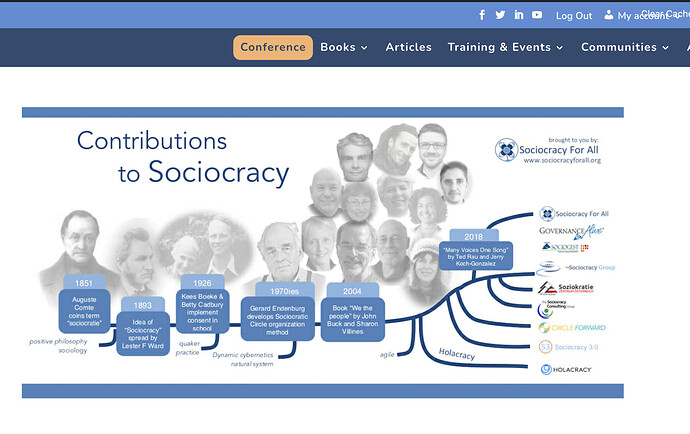I’m currently writing on a semi-related topic in the Writers Workshop. My article does not speak to the origins of sociocracy in its entirety, and instead is an exploration of the history of circle gathering, benefits of gathering in circles, and the modern application of circle-based meeting formats (which spawned its own topic, how sociocracy integrates linear and circular models of facilitation for effectiveness and connection).
I do not draw a direct link between sociocracy and indigenous circle/council practices (if one exists, I didn’t find it), but rather, acknowledge that historically, humans have naturally come into circles for council, healing, and decision making–across the wide earth. While I reference evidence of indigenous circle gathering in North America, Europe, and Africa, I don’t assign or give credit to any one people or lineage for “inventing” meeting in circles because I think it is a quality of our humanness that we gather in circle and not something someone discovered. Again, I only tackle gathering in circles in my article, and not the whole of sociocracy.
In response to THIS conversation about the origin story and the related illustration: yup, that’s a lot of white people. As far as addressing the aesthetics alone, this image could easily be reimagined without the use of photos.
As far as acknowledging contributors: I think it’s important to honor the work and innovations of the brilliant minds who have cultivated the wisdom that is sociocracy as we practice it today, AND I think it is important to include the global, multicultural and indigenous history of consent-based decision-making in the conversation. We can hold both.
It surprises me to think that in the last 50 years, there hasn’t been a single significant contribution to sociocracy by any person of color. There’s a conversation.
In our acknowledgement of the history of peacemaking/decision-making practices, and the indigenous and people of color who made contributions in the field, we can acknowledge that we probably don’t have all the names and faces of pertinent figures in the movement. At the very least, the conversation creates an opportunity to develop the awareness to question the pattern. And then, hopefully, the awareness to not replicate it.

